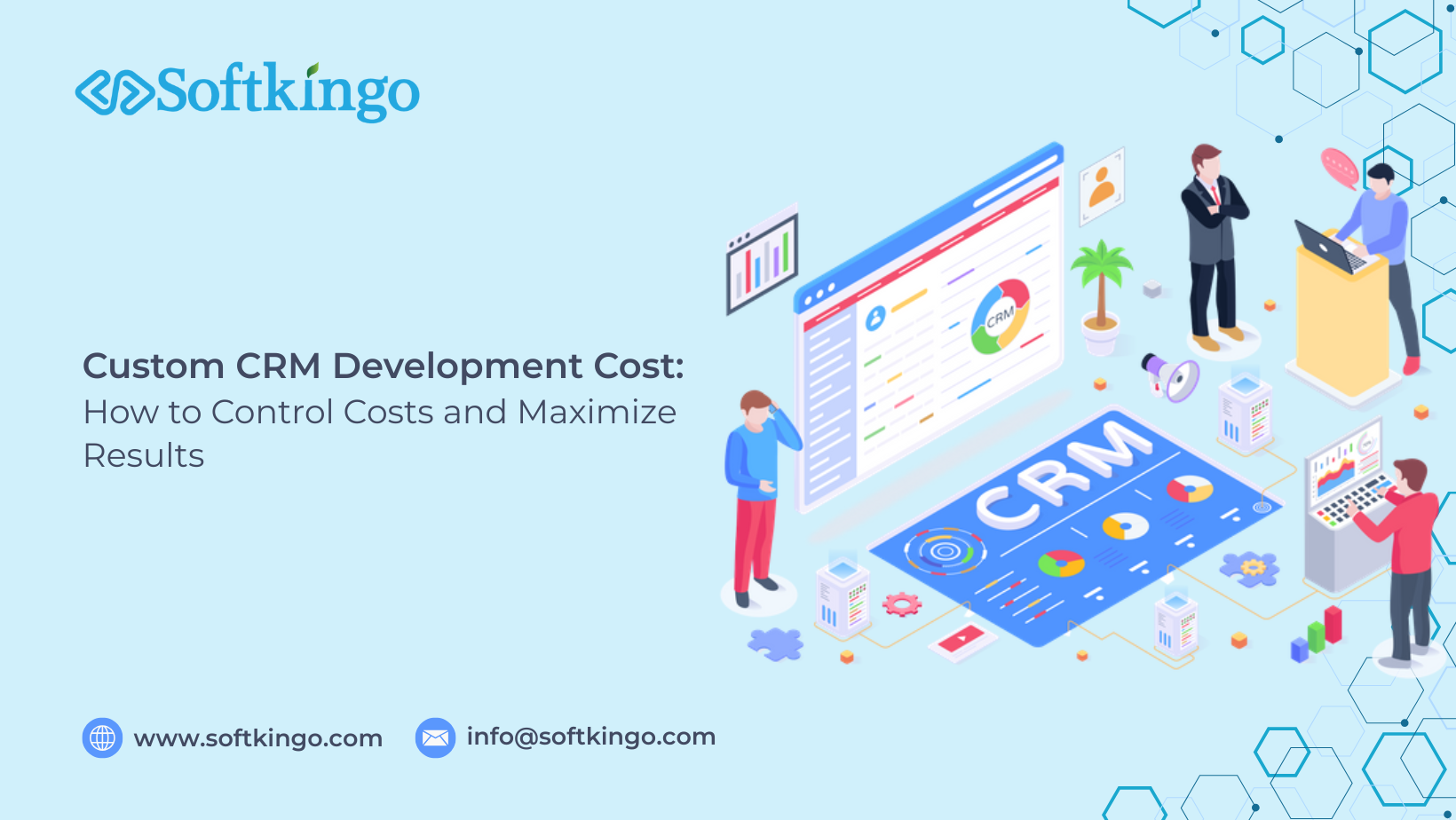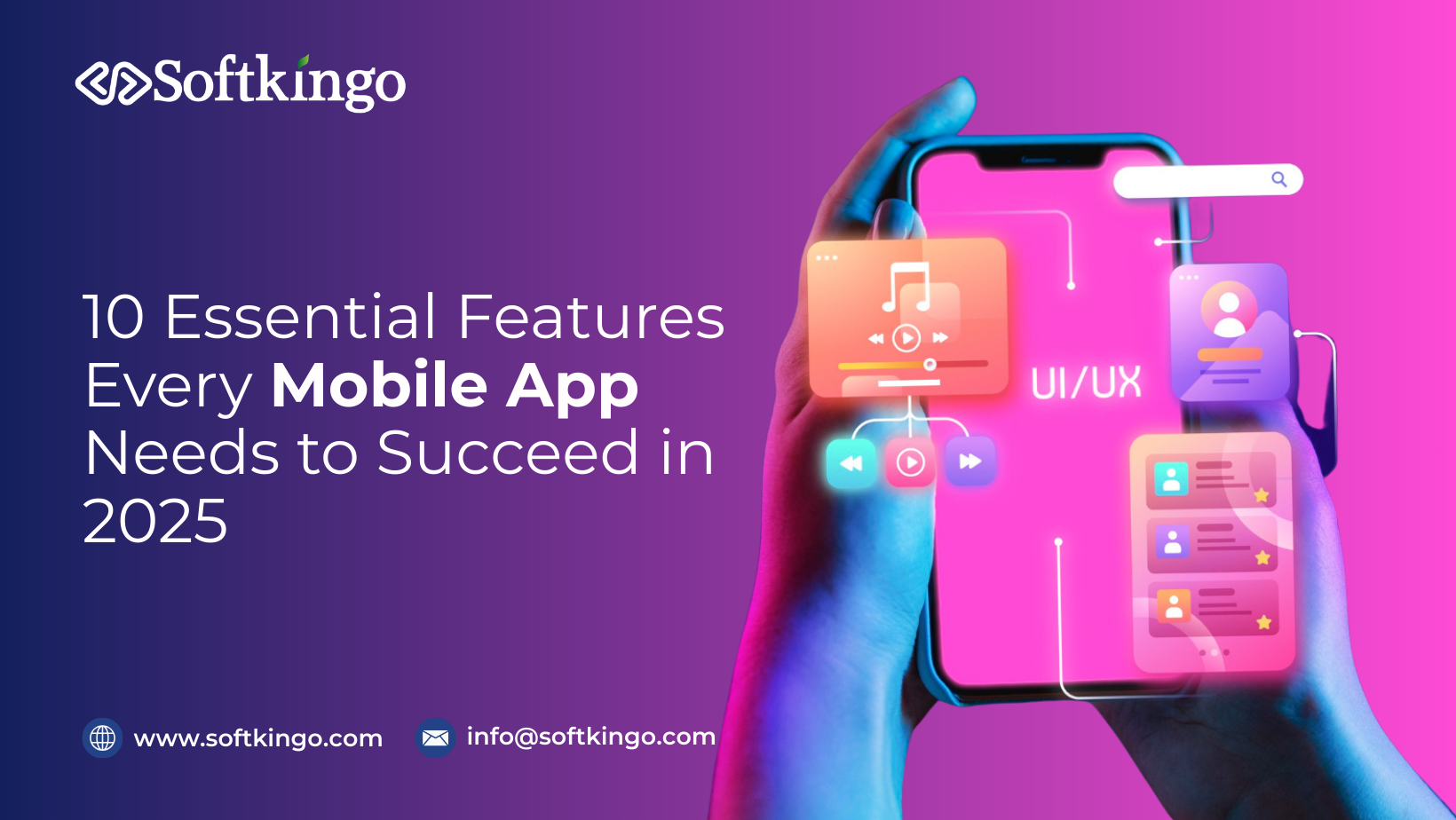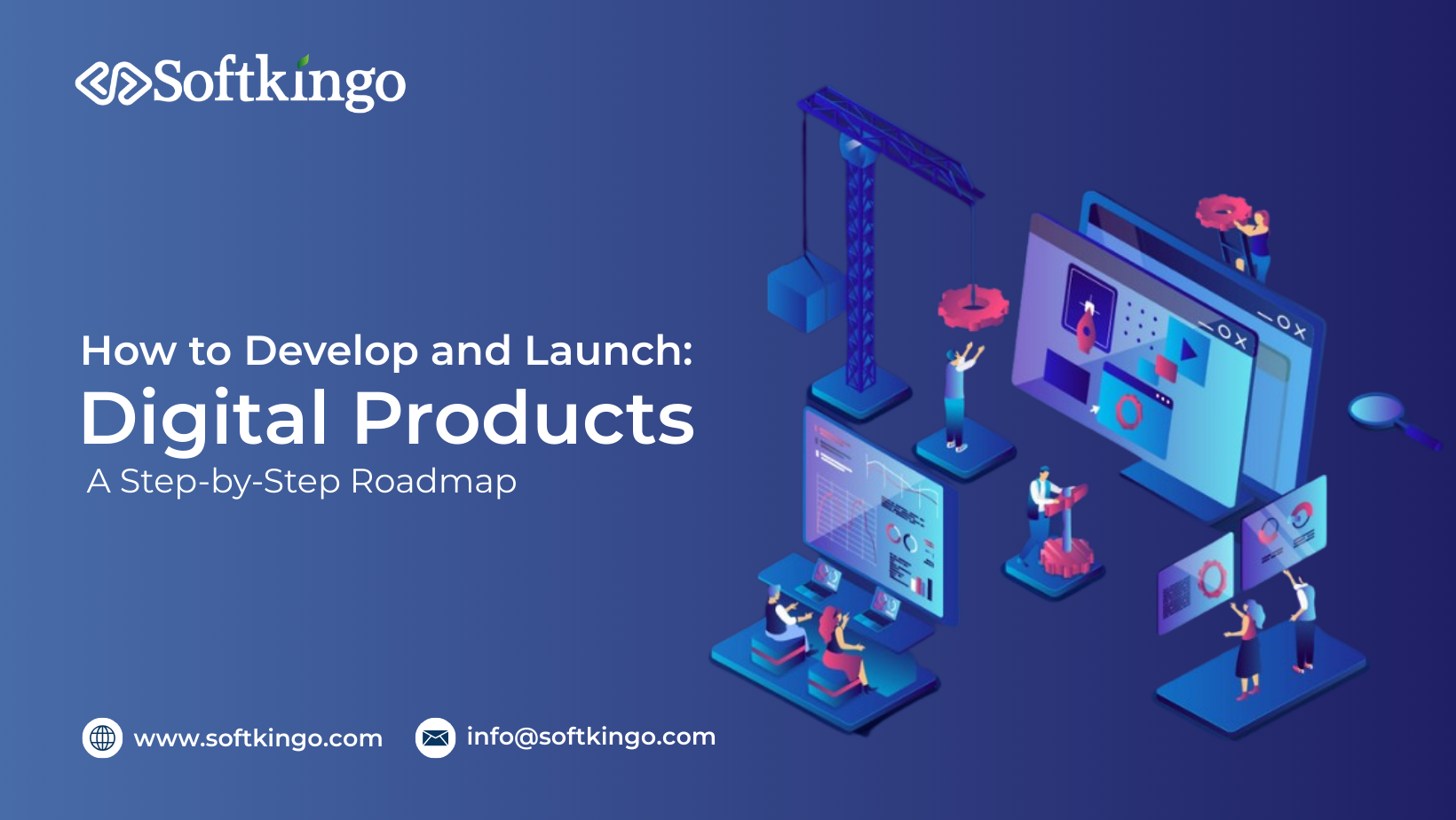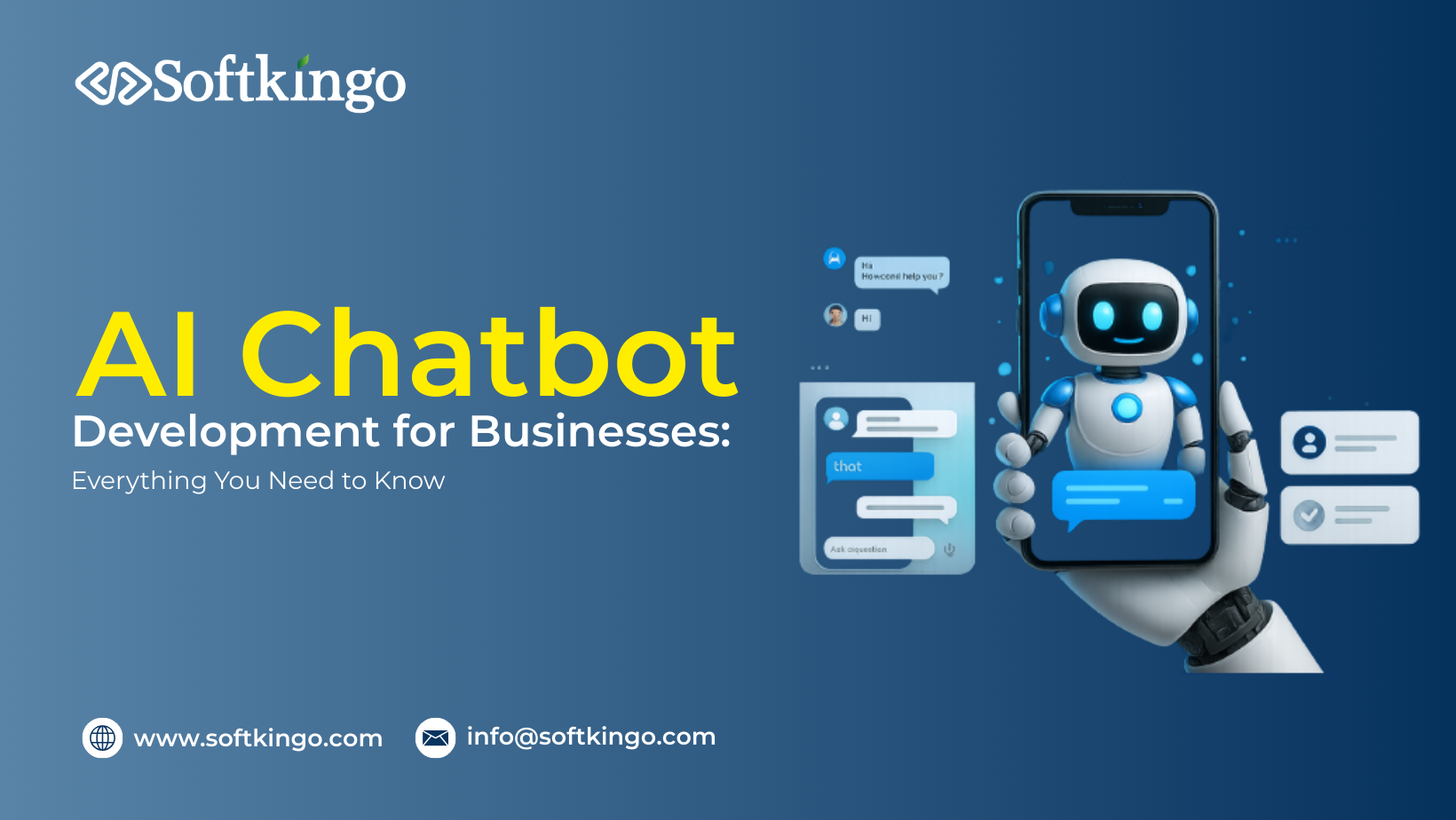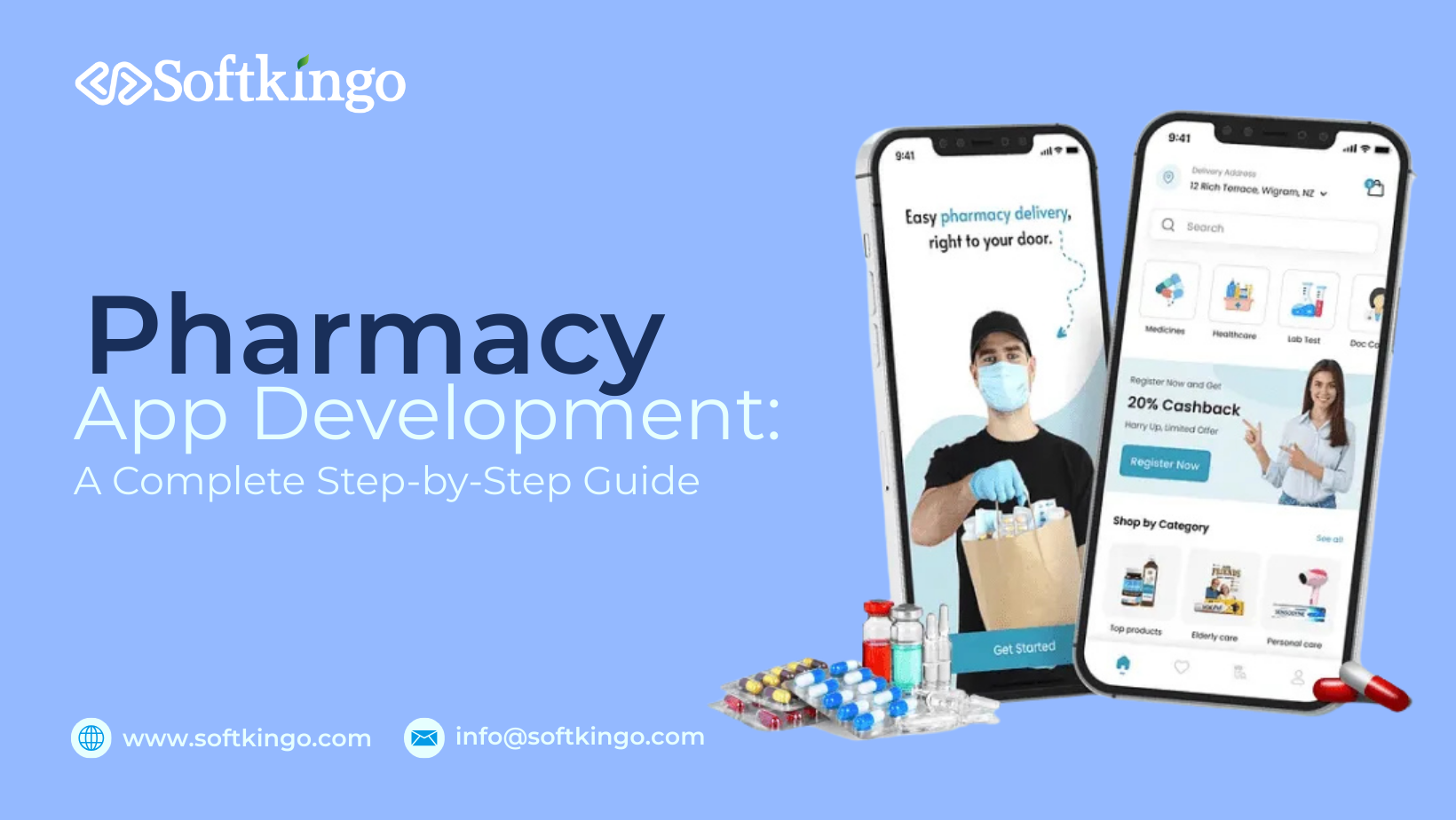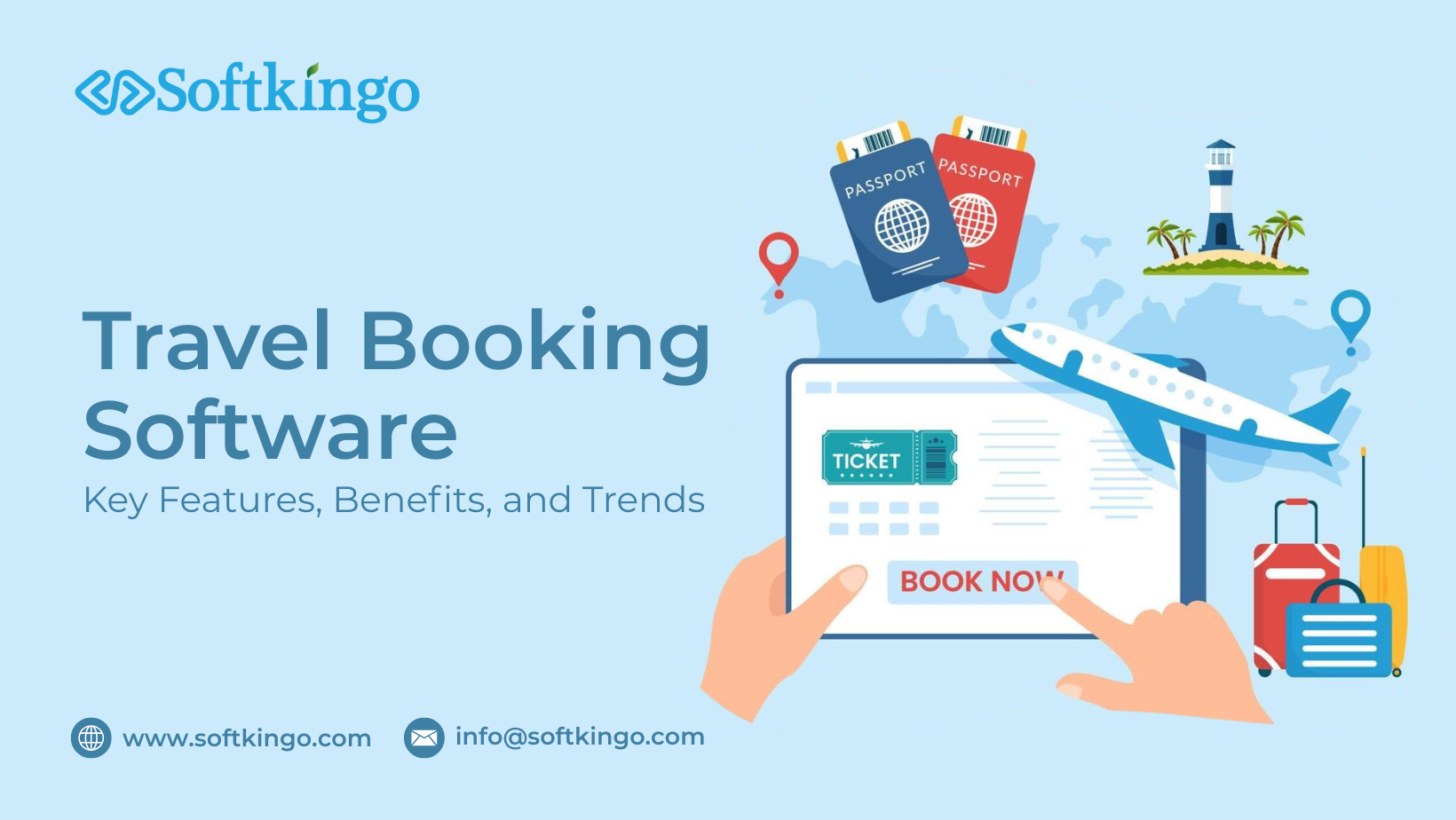Enterprise Mobile App Development: A Complete Guide to Types, Challenges
- 4 August 2025
-
 Paramhans Singh
Paramhans Singh
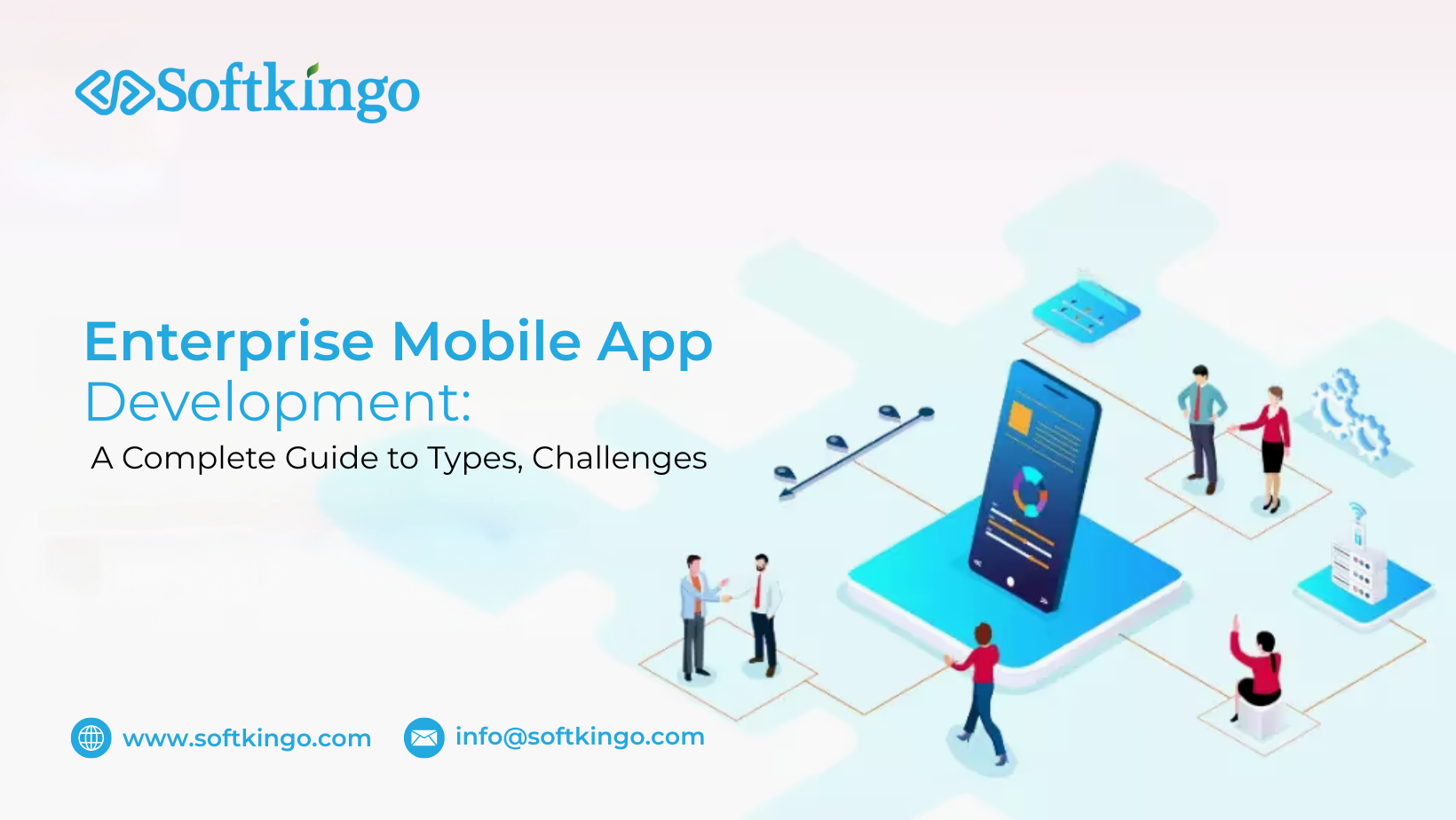
Running a business comes with plenty of challenges—keeping teams aligned, staying productive, and making sure the right information gets to the right people at the right time. That’s tough enough in one location, let alone across multiple offices, remote teams, or field operations. And while many companies rely on legacy systems or outdated processes, those tools often create more problems than they solve.
Imagine if your employees could access everything they need to do their jobs—tools, data, updates—right from their phones or tablets, wherever they are. Whether they’re in the office, at home, or on the road, mobile apps keep things flowing. No more digging through spreadsheets, waiting on emails, or dealing with clunky software.
Even better, when you build a mobile app that’s tailored to your business—designed specifically for your industry, workflows, and goals—it becomes more than just a convenience. It becomes a powerful tool for productivity, collaboration, and smarter decision-making. Tasks get automated, data is shared in real-time, and people spend less time chasing down information and more time doing meaningful work.
And it’s not just about internal efficiency. These apps can help you deliver a better experience to your customers, spot trends faster, and give your team what they need to do their best work every day.
It’s no wonder more businesses are going mobile. The rise of remote work, the popularity of mobile devices, and the constant need to adapt have made mobile solutions a must-have—not just a nice-to-have.
We’re also seeing continued investment in enterprise resource planning (ERP) systems—those all-in-one platforms that help businesses manage everything from finances to operations. That market is expected to grow steadily, hitting over $62 billion USD by 2028. It’s a clear sign that companies are leaning into digital tools to stay organized, efficient, and ready for what’s next.
In this guide, we’ll walk you through what enterprise mobile app development really looks like—from how it works and what it costs, to the real-world benefits and things to consider before getting started.
What Is Enterprise Mobile Application Development?
Enterprise mobile application development focuses on the creation of robust, secure, and scalable mobile apps for big-o business purposes. These are not just common consumer applications but are rather custom tools that act to smoothen a company’s operations, improve productivity, and deal with concrete business issues emanating from various departments.
In fact, these apps usually go on integrating with systems a company is already using-perhaps a CRM, an ERP, or an internal database-to empower the relevant internal stakeholders with a very seamless experience through the touchpoints with this app. By investing in an enterprise mobile solution, they equip their workforce with a relevant set of tools that allow them to think smarter, realize things faster, and stay ahead in this fast-evolving business.
Compared to their consumer counterparts, enterprise applications are more sophisticated and more advanced in features since they satisfy a particular business need. They cut down on the amount of work that a team has to do for internal revolving issues, bottlenecks, or outdated systems and build on the processes associated with those business tasks. And since businesses are constantly changing, these apps have to be flexible, able to grow, and grow together with the business.
Key Differences and Accent Features:
Security: When industries like Finance or Health are involved with sensitive data, security can never be compromised. Industry-standard security measures must be adhered to, from secure coding to testing, in order to protect information and comply with regulations.
Flexibility & Customization: Businesses never remain still. For an enterprise application to be, it has to be able to adjust easily to shifting requirements, new objectives, or transformations in the markets.
Connectivity: If it is no good to work along with your present systems, it might eventually turn into more of a headache than an aid. Your app must be able to integrate seamlessly with existing platforms.
Scalability: With an increase in users and activities, your application must be able to handle them without performance drops or any sorts of failures. With scalability enabled, your app can grow with you.
Types of Mobile Business Apps
Every business has its own areas for improvement and development. Therefore, there are different types of mobile business apps available, tailored to meet their needs. Here is a summary of the most common applications:
Billing Systems
These applications manage payments, invoices, payroll, and other financial services. They also automate transactions. Payment information is centralized for easy tracking and auditing.
Customer Relationship Management (CRM)
These applications organize customer information, such as contact information, purchase history, call logs, and more. This gives businesses a clear and unified view of each customer and strengthens their relationships, from sales to technical support and marketing.
Business Intelligence (BI)
BI applications are the brains of your business. They automate workflows, analyze performance, and provide dashboards that offer valuable insights to improve decision-making and increase efficiency.
Enterprise Resource Planning (ERP)
Enterprise resource planning (ERP) systems help manage budgets, risks, projects, and other resources, such as time, money, and staff. They also help organizations allocate available resources in the most appropriate manner to ensure smooth operations.
Human Resources
HR applications assist hiring managers and HR professionals with various aspects of employee management, such as onboarding, performance management, and attendance records.
Project Management
These applications help keep projects on track by managing tasks, deadlines, budgets, and resources. These applications are particularly important for large projects and often include features that facilitate collaboration and direct communication.
Marketing Automation
Marketing automation applications provide marketing departments with the tools to plan, automate, and track marketing campaigns, making marketing more efficient and data-driven.
Enterprise Mobile App Requirements
Understand Your Business Needs
Before creating an enterprise mobile app, it’s essential to clarify your company’s true needs. Do you want to improve fieldwork, streamline internal communications, or enhance customer service? Understanding your key objectives and challenges will help you understand the app’s capabilities and ensure it delivers real value, such as streamlining operations or enabling better decision-making.
Integration with Your Existing Systems
Most businesses rely on a combination of existing systems, such as enterprise resource planning (ERPs), customer relationship management (CRMs), human resources tools, and more. Your new mobile app must work seamlessly with these existing systems to ensure a smooth flow of information, without creating data silos or additional manual tasks. Integrating your app with your existing technology environment ensures optimal operation.
Built to Grow and Adapt
Your business isn’t static, and neither is your app. Enterprise mobile apps must be designed to grow with you: to handle more users, new features, and emerging technologies like artificial intelligence or predictive analytics. Choosing the right technology from the start prevents you from starting from scratch as your needs evolve.
Strong Security and Access Controls
Security isn’t optional. Enterprise apps often handle sensitive data, so protecting it is critical. This means implementing strict access controls, encrypting data, clearly defining user roles, and complying with regulations like the General Data Protection Regulation (GDPR) or the Health Insurance Portability and Accountability Act (HIPAA). Your app should secure your data while enabling your teams to collaborate securely wherever they are.
Excellent User Experience
Although enterprise apps are internal tools, they should be easy to use and enjoyable. A sleek design, easy navigation, and fast performance encourage employees to use the app, improving adoption and productivity. Regular user feedback during development helps adapt the app to meet actual user needs.
Performance Monitoring and Analytics
To understand your app’s performance, you must include analytics to monitor its usage, performance, and impact on your business goals. Real-time reporting and predictive analytics help you quickly identify trends, make better decisions, and continuously improve your daily operations.
Benefits of Enterprise App Development
Enterprise mobile apps offer numerous benefits to your business. From task automation to regulatory compliance to seamless communication, these apps can increase your overall productivity.
Better Data Management
Enterprise data management manages the storage, processing, and analysis of company data. Reports indicate that the average employee spends up to two hours a day searching for the information needed to complete their tasks. Enterprise mobile app development provides employees with solutions that improve their data flow. Having an integrated system with access to the necessary information allows your employees to focus on their tasks without wasting valuable time.
Additionally, a consolidated view of your data provides opportunities to analyze and validate your information. Enterprise data management mobile apps eliminate duplication and inconsistencies that affect the accuracy of company data. Furthermore, a single source of information facilitates better file monitoring and increases transparency.
Financial Compliance
In addition to simplifying financial management and eliminating human errors related to payroll and accounting, enterprise applications also contribute to improving regulatory compliance. These systems offer features that facilitate collaboration with tax experts, auditors, and other entities. They also provide a single platform for securely storing, sharing, and editing any file, and use permission management to prevent unauthorized access.
Developing custom mobile applications for enterprises also enables comprehensive resource management systems. This allows the finance department to calculate budgets, prepare financial forecasts, assess risks, and much more. Enterprise mobile applications also help companies automate financial transactions and control payments to avoid delays and resulting penalties.
Improved Human Resources Management
In addition to recruitment, HR functions include orientation, employee evaluation, training, workplace safety compliance, and much more. Managing employee hours, compensation, and absences can be complex, especially for remote companies. HR management applications provide a comprehensive overview of the entire office and improve workflow.
With enterprise software, HR professionals can partially delegate the integration process to the system. They can prepare documents that explain the company’s operating procedures and adapt them to each employee’s situation.
Advanced Business Strategy
Centralized storage of company data facilitates more advanced analysis. Companies that track data and extract important information gain valuable insights that enhance their strategy. Additionally, they can monitor and track their goals and progress in real time. By setting up notifications for key metrics, their managers can respond immediately and resolve issues.
Supply Chain and Logistics Management
Supply chain management is a broad topic that encompasses everything from warehouse and inventory management to logistics operations. Automated systems offer tremendous opportunities for manufacturers and retailers by reducing human error, simplifying tasks, and allocating resources. Instead of requiring a warehouse manager to manually count items, you can use mobile apps to track products.
These business packages also help you determine the most appropriate delivery routes, optimize shipping management, and provide advanced tracking tools. With business mobile apps, companies can avoid delivery errors, prevent product loss, and improve customer experience.
Enhanced Customer Support
You can also leverage enterprise mobile application development to improve the quality and responsiveness of the customer support department. In conjunction with AI algorithms, you can build an application that is available 24/7 and handles simple, repetitive requests. Using customer data derived from your data analytics procedures, you can even personalize each conversation to further increase client satisfaction.
Core Features of an Enterprise Mobile App
When starting the enterprise mobile app development process, it’s recommended to focus on essential features that shape the final product. After a successful launch, you can collect feedback and expand the app’s functionality with more advanced tools. In this section, we’ll discuss which core functions you should consider adding to your technological solution.
Authentication and User Roles
Like any other mobile application, an enterprise solution requires a robust user authentication process with sophisticated security standards. To increase data protection, companies embed multi-factor authentication using tokens, messages, one-time passwords, etc. User roles also include permission management that dictates what a user can access, edit, and delete.
Data Management
Enterprise mobile apps deal with large data volumes which requires safe and resilient data storage and transfer. Your application should be connected to a database to deposit various pieces of customer and company information. If you’re building enterprise mobile applications for collaboration, make sure to include data-sharing features to facilitate a simple and secure data transfer.
Cloud Storage
Storing data in the cloud offers access to optimized data management as well as easy access from anywhere in the world. As long as your employees have an internet connection, they can simply log in and retrieve any information they require. Cloud computing services are also highly scalable, which allows you to seamlessly grow without worrying about additional servers. Finally, using cloud storage is a cost-saving strategy as you can take advantage of the pay-as-you-go pricing model.
Instant Messaging
Enterprise mobile application development also involves building a strong messaging platform that connects employees throughout the organization. This feature allows workers to instantly find their colleagues via the app to exchange information or solve issues. Clear and open communication channels are key to success for any business or department.
Integrations
Aside from integrating with the existing IT environment of your company, an enterprise tool needs to connect to third-party services. Developing enterprise applications is a lengthy and expensive process which is why organizations utilize APIs to expand the functionality. For example, you can integrate your enterprise mobile applications with Google Docs to collaboratively create and finalize documents.
Push Notifications
Alerts and push notifications are meant to update workers in case something urgently requires their attention. Especially in the remote work environment, your employees might be online at different times of the day. Having the option to inform them whenever an emergency occurs will help you to solve problems faster and avoid escalations.
Offline Mode
Regardless of your location, power outages can happen anywhere. Offer your employees access to a lighter offline version of the app to avoid disruptions. The offline mode is limited to only critical information that an employee absolutely requires to perform their tasks.
Real-time Analytics
Analytic features are necessary to monitor the app’s performance and identify potential roadblocks. Using metrics, enterprise app software engineers can release new features, update old functions, and remove some of the functionality altogether. Additionally, real-time monitoring allows the IT department to proactively resolve smaller problems to avoid snowballing.
Enterprise Mobile App Development Stages
The process of enterprise mobile app development can be notoriously long and complicated. Read our guide on the stages of mobile app development to avoid common mistakes and build a functional and well-performing enterprise solution.
Determining Business Objectives
Before investing time and money into enterprise mobile application development, you need to investigate which problems you are striving to solve. First and foremost, understand what users struggle with and how you can help them fulfill their duties. In later stages, this step will help you quantify the performance of the app and understand how to improve its features to meet customers’ requirements even better.
Creating Technical Specifications
Expand your idea to list a set of features that your enterprise mobile apps need to adopt in order to successfully cover user needs. First, brainstorm as many features as you can to then divide them between essential and non-essential features. Essential features are the ones that are the minimum required to solve the user problem. Non-essential features are directed toward making the solution more user-friendly, technically advanced, and convenient. For example, user authentication is an essential part of an application, while web-based augmented reality is a non-essential feature.
Calculating Resources
In this phase, you and other stakeholders should measure the resources available at the organization. These include budget, various specialists, hardware, software, and more. Using these findings, you can decide which enterprise mobile app developers you need to hire to fill in the skill gap.
Selecting the Development Team
Based on the insights from the previous stage, you can either hire in-house IT specialists or outsource your project to a software development company. For instance, if you’re fully equipped but missing only one or two team members, hiring an in-house development team may be a good idea. In case your company completely lacks an enterprise mobile app development team, it’s recommended to delegate your project to a third party. Another option is staff augmentation, in which a company temporarily hires a few specialists for the duration of the project.
Considering Platforms
In this phase, you have two main options: native and cross-platform enterprise app development. Take into account the target audience and what mobile devices they use. If your company provides smartphones with the same operating system to every employee, then native enterprise mobile app development is the way to go. If there is no consistency in what devices people have, you can either build two separate mobile apps or choose a platform-agnostic approach.
While native enterprise mobile development delivers higher performance, it does come at a higher price. On average, native mobile apps cost roughly 30% more to build and launch. Cross-platform enterprise application development is more affordable and much faster as you are developing one code source for both operating systems (Android and iOS).
Making a Project Roadmap
A project roadmap is a blueprint that will be used throughout the entire enterprise mobile app development process. Aside from listing features, this document should include mobile app architecture, major milestones, project tasks, assignees, and software and hardware specifications. In other words, it’s a comprehensive description of the project’s objectives, resources, and development time.
Wireframe Design
Wireframes are low-fidelity versions of final products. Enterprise mobile app development companies prepare these to test the idea and visualize the application for the stakeholders. As low-budget representations of the app, wireframes do not require many resources to make and allow mobile developers to make sure they are moving in the right direction.
UI/UX Design
UI/UX design is about the feel of the enterprise mobile applications and can largely determine their success. Users nowadays are used to a certain level of usability and performance. A mobile app design needs to facilitate easy navigation and shorten learning curves. This development stage also includes A/B testing to ensure your design is aesthetically pleasing and easy to use.
Product Development
Finally, you can move on to the most substantial part of the enterprise mobile app development process. In short, this entails building the front end for the client, the back end for servers, and the admin panel to control the app. Depending on the type of mobile development you choose, you can use, for example, Swift to build an iOS app and Kotlin to create an Android solution. For cross-platform app development, you can go with Flutter, React, Xamarin, and other technologies.
Testing
Albeit a separate task, testing mostly occurs in parallel with development. Modern practices recommend building and testing in small sprints rather than waiting until all coding is complete. This is justified by the ever-increasing cost of a mistake the deeper you get in the development cycle. In the production phase, the cost of a bug is at least 30 times higher than in the coding stage. Make sure your team is extended with quality assurance engineers who can guarantee an industry level of security and performance.
Deployment and Release
Now when the enterprise application is built and tested, your team should check it against all business, user, technical, legal, and other mobile app requirements. For example, if you’re working with health data, compliance with data protection laws like HIPAA is mandatory. After completing the evaluations, you can launch the application on the corresponding platforms.
Maintenance and Support
Even after the launch, your enterprise apps development team is there to monitor performance, collect feedback, and continuously release new features.
5 Challenges of Enterprise Mobile App Development
Meeting Complex Business Requirements
Meeting diverse, often complex, business requirements is one of the most significant challenges of enterprise mobile app development. These requirements include strict compliance, multi-tiered workflows, data governance, and seamless integration with internal business logic and backend systems. Enterprise apps must operate across different departments, support diverse user roles, and meet operational requirements without compromising security or scalability.
Legacy Systems and Integration Barriers
Modernizing legacy systems is a major obstacle to enterprise mobile app development. Many organizations still rely on outdated IT infrastructure, which may not be compatible with modern technologies or cloud infrastructures. Integrating mobile apps with legacy backend systems often requires custom middleware, data normalization, and security reconfigurations, all of which can delay development and complicate application architecture.
Balancing User Expectations and Business Control
Enterprise mobile apps must strike a balance between user experience and business control. Today’s users, whether employees or customers, expect seamless and intuitive interactions from public-facing applications. However, stringent business requirements, such as data access restrictions and compliance controls, can impact ease of use. Therefore, prioritizing usability testing and utilizing modern prototyping tools is critical to ensuring features meet user expectations.
Ensuring Scalability as Businesses Grow
As businesses grow, the complexity of their operations increases, as do the performance requirements of their applications. Therefore, creating an application architecture capable of supporting increasing data volumes, a rapidly expanding user base, and more complex processes is critical. Whether automating processes or improving customer interactions, enterprise mobile applications must be designed from the start with scalability in mind to ensure their long-term success.
Keeping Up with Emerging Technologies
The rapid pace of technological change creates a dynamic environment for developers. Integrating cutting-edge technologies, such as artificial intelligence, machine learning, and cloud infrastructure, can bring significant benefits, but also introduces new risks and complex learning curves. Companies should identify innovations that truly improve employee productivity or customer value and avoid over-engineering. Regular updates and a flexible technical framework help maintain competitiveness and adaptability in an ever-evolving digital environment.
Enterprise App Development Cost
The total cost of developing an enterprise app depends on several factors, including complexity, features, technical infrastructure, location, and team structure. On average, a custom app costs between $30,000 and $500,000. While a simple data sharing tool may be affordable, a feature-rich solution that incorporates machine learning algorithms can be expensive.
The location of the IT partner is another important factor in the final cost of mobile app development. Companies based in the US, Canada, Germany, and France charge significantly higher prices than their counterparts in Asia, South America, and Eastern Europe.
How to Reduce Enterprise Mobile App Development Costs
Choosing the Right IT Service Provider: Having a reliable and experienced enterprise app development partner is the most important factor in determining the overall cost and product quality. So, how do you choose a mobile app development company? Do your due diligence to ensure you’re working with a team that completes the work on time, communicates consistently, and adheres to your vision. Also, request a quote from the potential supplier. A mobile app request for quote is a document that outlines the project details and presents a carefully considered proposal from the supplier.
Minimum Viable Product (MVP): Unlike a wireframe or prototype, a minimum viable product (MVP) is a complete version of an enterprise application, albeit with some limitations. An MVP allows you to gather valuable feedback before improving less critical features and design.
Adopting Agile and DevOps Methodologies: Agile is a commonly used SDLC model that divides the entire project into smaller phases. Each phase includes coding, testing, and deployment, streamlining the overall process and preventing bugs from reaching production. DevOps is a strategy based on continuous integration and delivery, integrating the work of development and operations teams.
Key Trends in Enterprise Application Development
In this section, we will focus on the technologies that are likely to dominate the enterprise mobile application development market in the near future.
Microservices is a mobile application framework consisting of a set of different services deployed independently. This distribution facilitates scalability, improves fault isolation, and enhances data security.
Big data systems help businesses process and analyze their data. Companies collect massive amounts of business data that must be structured and organized to be useful to analysts. Using a big data platform, you can gain valuable insights that significantly improve your business.
Artificial intelligence helps automate and streamline various business processes. AI algorithms are used in customer service, marketing, sales, and many other sectors.
Tips for Developing Successful Enterprise Apps
Embarking on a new project can be challenging and intimidating, especially when it requires a significant investment. Here are some expert tips to help companies create successful enterprise mobile apps.
Choose Your Technology Carefully: Consult with enterprise app development specialists to choose the most appropriate technology stack for your project. Carefully selected mobile app technologies will reduce costs, provide a high level of security, and ensure excellent performance.
Deploy Your App to a Small Group: Before rolling out your solution to the entire company, distribute it to a small number of employees. This will allow you to test it in a production environment without overcrowding. Remember to gather feedback and make any necessary changes to the product.
Implement UI/UX best practices: If users don’t understand how to use the app and its features, they may abandon it immediately. Focus on a concise design, a simple UI, and a clear user experience to provide an optimal user experience.
Ensure Cross-Platform Compatibility: To maximize accessibility and acceptance across all departments, your mobile app should be compatible with iOS and Android devices. Choosing cross-platform development tools simplifies the process, reduces unnecessary effort, and ensures consistent performance and appearance across different operating systems. This approach meets the needs of businesses using mobile apps, making the solution accessible to a wide range of employees and devices.
Integrate Features That Facilitate Communication
An effective business mobile app should not only streamline workflow but also improve collaboration. Integrating features such as instant messaging, push notifications, and integration with company communication tools can significantly improve employee productivity. By facilitating communication, your app becomes an essential part of daily operations, not just a digital tool.
Continuous Monitoring and Performance Improvement
The enterprise mobile app development process doesn’t end with implementation. Continuous monitoring, performance analysis, and user feedback are essential to ensuring the app’s effectiveness and adaptability to changing business needs. Use analytics to understand the app’s impact on employee productivity and identify areas for improvement. Regular, data-driven updates ensure the relevance and value of your solution.
Conclusion: How We Can Help
The main takeaway from this extensive guide is that your choice of an IT partner matters. When looking for an enterprise app development vendor, pay close attention to their technical expertise, work ethic, and responsiveness. Finding a reliable partner significantly increases the chances of success. Our IT team at Softkingo consists of seasoned professionals with years of experience in enterprise mobile application development. We choose a client-centric approach that allows us to deliver solutions that meet customer’s needs and exceed their expectations. Get in touch with our team to discuss your idea and start your project.
Paramhans Singh is the CEO and founder of Softkingo Technologies, bringing over 8 years of experience in delivering custom software solutions that help startups and enterprises achieve their business goals. He has successfully validated more than 220 app and website ideas and delivered over 100 tailored solutions, utilizing a range of technologies such as Swift, Kotlin, React Native, Flutter, PHP, RoR, IoT, AI, NFC, AR/VR, Blockchain, and NFTs.




